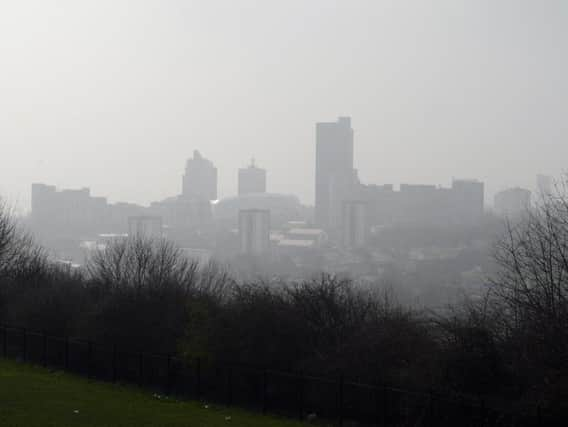'Air pollution could cause 15,000 deaths in Yorkshire over a decade'


New calculations by the British Heart Foundation (BHF) have outlined the stark picture for communities across the region.
-> Leeds street named worst NO2 pollution hotspot out of London as over 200 Yorkshire sites are listed
Advertisement
Hide AdAdvertisement
Hide AdAccording to the charity, heart and circulatory disease deaths attributed to particulate air pollution – anything solid or liquid suspended in air such as smoke, fumes and soot – could exceed 15,400 in Yorkshire and the Humber over 10 years (see full run down by area below).
The charity says air pollution presents a “major public health emergency” which must be urgently addressed by the new Government. It is calling for World Health Organization (WHO) guidelines on particulate matter (PM) to be adopted in to UK law, and met by 2030.
Jacob West, executive director of Healthcare Innovation at the BHF, said: “Every day, millions of us across the country are inhaling toxic particles which enter our blood and get stuck in our organs, raising our risk of heart attacks and stroke. Make no mistake – our toxic air is a public health emergency, and we haven’t done enough to tackle this threat to our society.
“We need to ensure that stricter, health-based air quality guidelines are adopted into law to protect the health of the nation as a matter of urgency.
Advertisement
Hide AdAdvertisement
Hide Ad"Clean Air legislation in the 1950s and 60s, and more recently the smoking ban in public places, show that government action can improve the air we breathe.
"Decision makers across the country owe it to future generations to help stop this alarming figure from becoming a reality. That’s why we are urging people to contact their MP and demand a change in the law.”
The UK subscribes to European Union limits for fine particulate matter (PM2.5), which is the pollutant with the most established links to health harms.
However, the limits set by the WHO are more stringent than the EU’s. The charity is urging the new Government to adopt WHO guidelines into the reintroduced Environment Bill, with a requirement that these limits are met by 2030.
Advertisement
Hide AdAdvertisement
Hide Ad"In July 2019, the Department for Environment and Rural Affairs (Defra) published findings showing that meeting WHO guidelines on air pollution is “technically feasible” in most areas of the UK by 2030.
It is estimated that up to 11,000 heart and circulatory disease deaths are attributable to particulate air pollution in the UK every year at the moment.
BHF research has shown that PM2.5 can have a seriously detrimental effect to heart health, making existing conditions worse, and increasing the risk of heart attack and stroke.
Dr Mark Miller, a BHF-funded researcher specialising in air pollution, said: “Air pollution is a serious public health issue which affects us all, and evidence of the negative impact toxic air has on our health is increasing all the time. Our research has found that air pollution damages our blood vessels, increasing our risk of blood clots, and in turn heart attacks and stroke.”
Advertisement
Hide AdAdvertisement
Hide AdEnvironment Minister Rebecca Pow said: “Alongside our Clean Air Strategy, which has been praised by the World Health Organisation as ‘an example for the rest of the world to follow’, our landmark Environment Bill will include a commitment to a legally binding target on fine particulate matter which will improve the quality of millions of people’s lives.”
The effect in Yorkshire and the Humber:
Heart and circulatory disease deaths which could be attributed to air pollution in the next decade could exceed 2,000 in North Yorkshire alone, according to the charity.
In its run down of how many people could be killed, there would be 1,960 deaths in Leeds, 1,430 in Sheffield and 1,330 in Bradford.
Additionally, the East Riding of Yorkshire would see 1,200 deaths, Kirklees would have 1,180 and Wakefield would see 1,030.
Barnsley, Calderdale, Doncaster, Hull, North East Lincolnshire, North Lincolnshire, Rotherham and York also face the prospect of hundreds of people dying in each location.